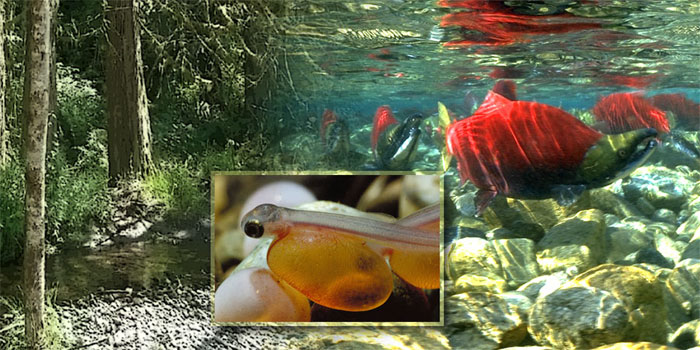Lab 6: SHIRAZ

Today we will be learning about SHIRAZ (Salmon Habitat Integrated Resource Analysis: Zowie!), a salmon life-cycle model that incorporates anthropogenic effects into fish-habitat relationships. SHIRAZ was developed under the supervision of UW Fisheries Professor Ray Hilborn. The model allows for future projections of salmon population sizes as affected by habitat variables that are discussed below.
It is important to note that SHIRAZ is closely connected to DHSVM, the distributed hydrology soil-vegetation model (See flowchart below). NOAA (National Oceanic & Atmospheric Administration) is currently using both of these models to predict the effects of anthropogenic factors on the salmon life cycle for Endangered Species Act (ESA) recovery planning.
Recall that DHSVM uses such properties as land cover, soil, topography, and precipitation to predict stream flow and stream temperature. These two outputs from DHSVM are then used as inputs to drive the SHIRAZ model. SHIRAZ uses information on stream flow & temperature, sediments, and other habitat quality indicators to project future salmon populations by size of stock, life stage, and location.

